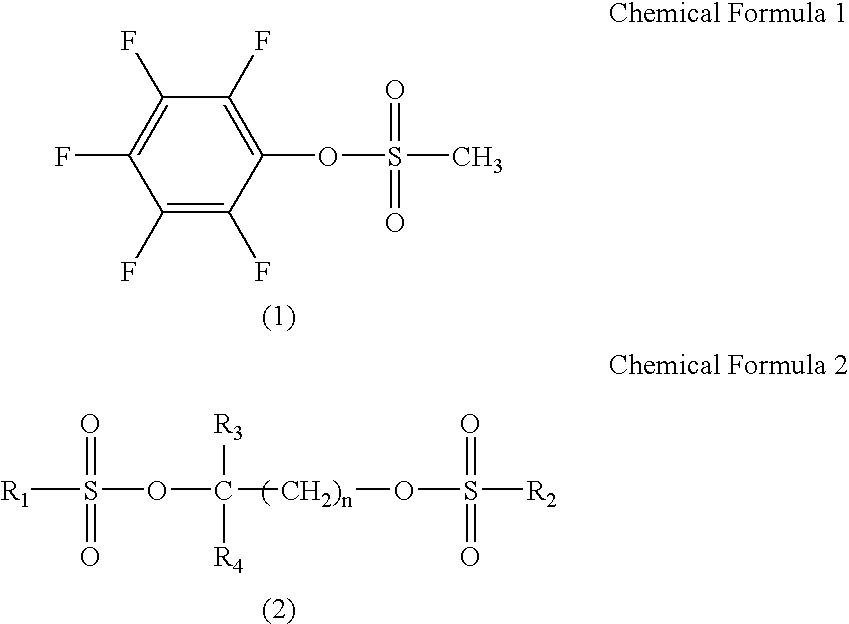Non-aqueous electrolyte secondary battery
a secondary battery and electrolyte technology, applied in the field of non-aqueous electrolyte secondary batteries, can solve the problems of insufficient cycle characteristics, battery expansion is larger than, and the initial capacity of the battery is reduced, so as to reduce the oxidative decomposition of the electrolytic solution and the initial capacity of the battery.
- Summary
- Abstract
- Description
- Claims
- Application Information
AI Technical Summary
Benefits of technology
Problems solved by technology
Method used
Image
Examples
example 1
Production of the Positive Electrode
[0075]First, active material “A”, which represents a lithium-cobalt composite oxide used as a component of a positive electrode active material, was produced as follows.
[0076]Cobalt (Co), 0.15 mol % of zirconium (Zr), and 0.5 mol % of magnesium (Mg) were coprecipitated as hydroxide, subjected to a pyrolysis reaction so as to obtain a tricobalt tetroxide (Co3O4) containing zirconium and magnesium.
[0077]The tricobalt tetroxide was mixed with lithium carbonate and heated at 850° C. for 24 hours in air atmosphere. The resultant mixture was pulverized to an average particle size of 14 μm in a mortar so as to produce the lithium-cobalt composite oxide (active material “A”) containing zirconium and magnesium.
[0078]A lithium-manganese-nickel composite oxide (active material “B”), which is another component of the positive electrode active material was produced as follows.
[0079]Lithium carbonate (Li2CO3) was mixed with a coprecipitated hydroxide expressed ...
example 2
[0085]Non-aqueous electrolyte secondary batteries were prepared in the same manner as in Example 1 except that pentafluorophenyl methanesulfonate shown in Chemical Formula 1 added to the non-aqueous electrolyte was 2.0% by mass.
example 3
[0086]Non-aqueous electrolyte secondary batteries were prepared in the same manner as in Example 1 except that pentafluorophenyl methanesulfonate shown in Chemical Formula 1 added to the non-aqueous electrolyte was 3.0% by mass.
PUM
 Login to View More
Login to View More Abstract
Description
Claims
Application Information
 Login to View More
Login to View More - R&D
- Intellectual Property
- Life Sciences
- Materials
- Tech Scout
- Unparalleled Data Quality
- Higher Quality Content
- 60% Fewer Hallucinations
Browse by: Latest US Patents, China's latest patents, Technical Efficacy Thesaurus, Application Domain, Technology Topic, Popular Technical Reports.
© 2025 PatSnap. All rights reserved.Legal|Privacy policy|Modern Slavery Act Transparency Statement|Sitemap|About US| Contact US: help@patsnap.com



